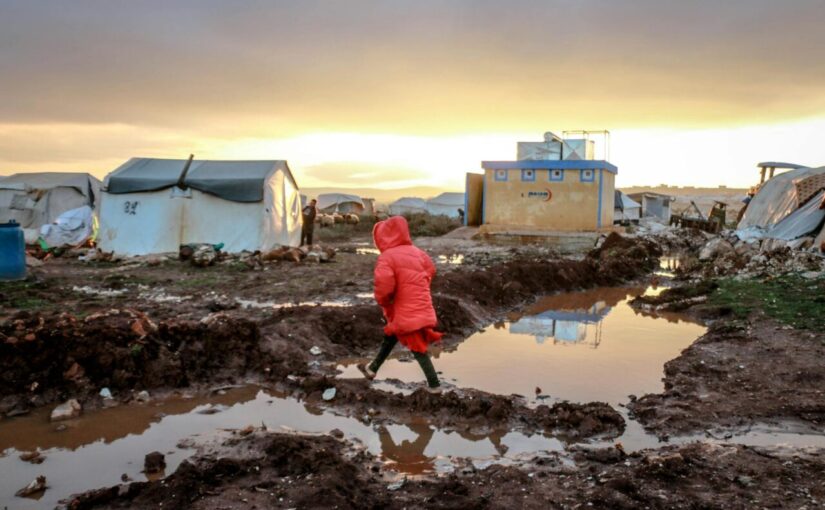Jon Gascoigne shares with us his thoughts on communicating and financing responses to future risks in the twelfth blog in this series based on the IGDC/YESI Webinar event ‘Emergencies, wellbeing and social justice in the Anthropocene.’
Jon Gascoigne’s work includes technical assistance for international disaster risk finance schemes and evidence and learning around climate risk. Jon joined us in this webinar to discuss communicating and financing responses to future risks.
Disaster Risk Financing
I work at the Centre for Disaster protection based in London which focuses on the poorest and most vulnerable globally and to what extent pre-positioned and pre-agreed finance mechanisms can be of use in response to a range of crises. These are predominantly natural hazards, so the climate dimension is the forefront here, but also, obviously, health and pandemic and conflict impacts as well, as all of these crises interrelate. Collectively, our work is known as ‘Disaster risk financing’ (DRF).
So our work is explicitly around how emergencies unfold as disasters. We are aware that there are activities that can be undertaken to stop them amplifying by assisting a speedy response, in particular, which we see with respect to providing shelter and food, for example, stopping the exacerbation of impacts.
My team is unusual in that it is fundamentally multi-disciplinary and covers development, humanitarian and increasingly the climate domain and institutions. We deal with actors from public to private sectors, often at a governmental level. There is also a particularly technocratic perspective; there’s no getting away from that. Much of the work involves some form of quantitative aspect of assessing risk and comparing and trading risk. We work with multilateral development banks, the UN system, and also NGOs and community groups on the ground.
A locally led agenda and pre-positioning are crucial to effective response
A key question faced with all disaster risk financing work, but often difficult to address, is the locally led agenda, as it’s known. There are many pilot studies being put in place, and a desire to scale up these schemes for economic efficiencies but there’s a contradiction that such boilerplate applications, where a template is taken from one community to another, is not reflective of local specificities of that location, as well as political economy. One thing that is certainly true is that to be more effective, and what we mean by effective must focus on the most vulnerable and meeting a range of development goals, as described by the UN sustainable development goals, is that if you don’t consider local voices, if you can’t get local voices included in both the design and the implementation of responses to disasters, then they will be much less effective and sub-optimal.
We aim to promote better disaster response by considering a range of key factors; which includes speedy response, which allows mitigating unnecessary suffering. Pre-positioning finance and actions gives you time to build in planning and preparedness, identifying exposed groups and communities, and determine beforehand what support they will need when hit by shocks, and how best to get that to them. Again, ideally, it offers the opportunity to identify and engage in advance with local actors who may be better placed to deliver support with respect to their knowledge and access. This improves the quality of ‘last mile’ delivery of solutions.
The challenges of labelling emergencies
Consideration of the notion of emergency and discourse around it is strangely absent in DRF work, perhaps because it permeates the fundamental activities of disaster response and the risk management cycle.
Societies have always and will always face risks from extreme events, infrequent but severe in consequence. With climate change, we can detect changes in frequency and severity of such events, for both quick and slow onset, as detailed by IPCC reports. We need to consider how we can link responding to disasters with adaptation and risk reduction, for which there are inevitably limits.
There is an emergency in availability of funding, for example humanitarian aid is increasingly stretched as sources become limited by socio-economic factors but need increases.
The label of emergency has been particularly effective in driving rapidly evolving approaches to governance and disclosure in the finance sector, which has the potential for international repercussions. For example, environmental, social and governance (ESG) factors attempt to encode climate risk into investment decision-making. The question is, with a proliferation of standards and approaches, is this more than a convenient form of greenwash?
There has been recent criticism of an increasing amount of ‘received wisdom’ hyperbole, exaggerating the impacts of climate change on financial markets, but such responses often have narrow focus on economic metrics rather than livelihood impacts on people and place.
There is also the aspect of climate fatigue, which is a very real issue in practitioners and the public. People simply get tired of being asked to accommodate, like some kind of extended cortisol release, an emergency footing over an extended, and potentially unlimited time scale.
Touching on the aspect of social justice, and with respect to COP 27 in Egypt later this year, is the topic of the Loss and Damage agenda, with a demand for reparations above and beyond adaptation funding, it’ll be interesting to see how a framing of emergency around both impacts and funding develops politically. At what point do symbolic commitments transmute into system-level changes?
Checkout the full version of Jon’s talk:
About the author

Jon is Lead Risk Finance Adviser at the UK FCDO-funded Centre for Disaster Protection. His work includes technical assistance for international disaster risk finance schemes and evidence and learning around climate risk.
This work builds on many years in the re/insurance industry, analysing catastrophe risks and designing risk transfer products for the private and public sectors. Activities included establishing academic research networks and co-ordinating with research councils. Jon has degrees in geography and spatial analytics.

